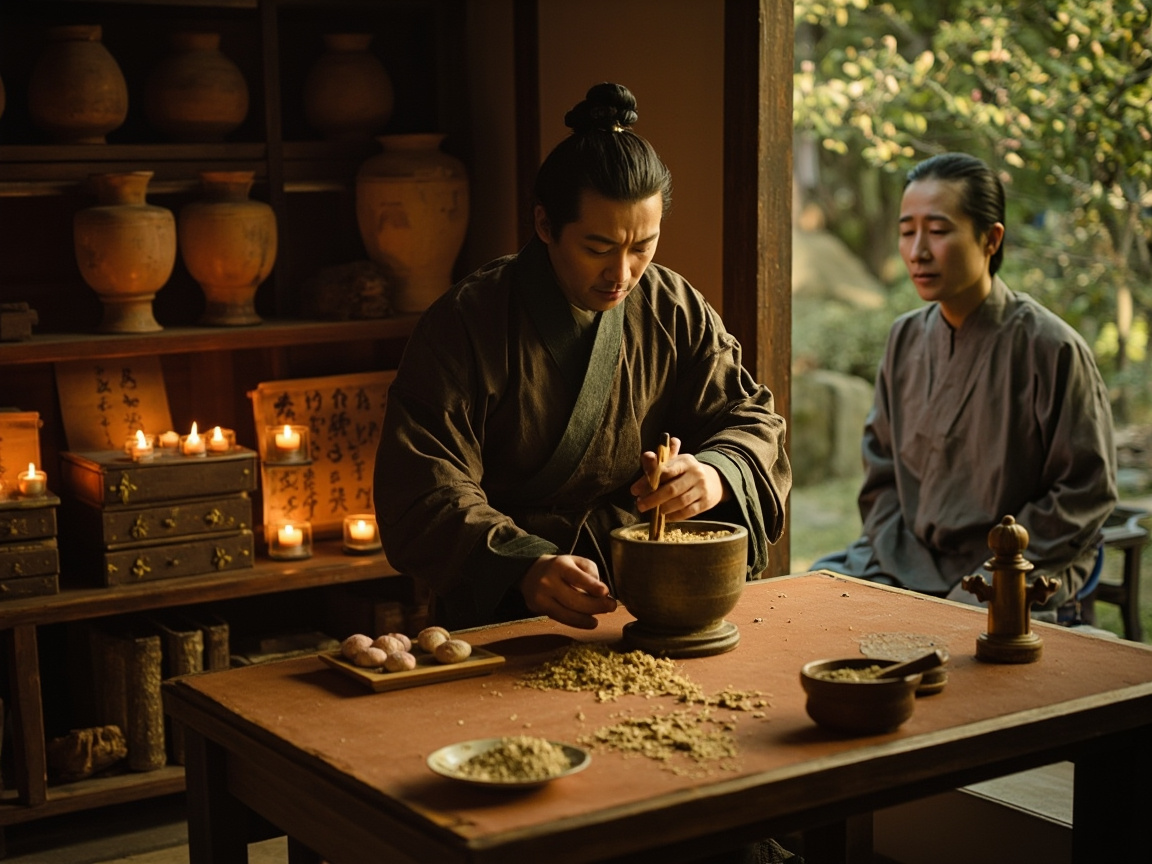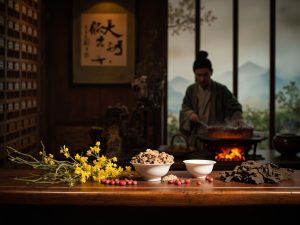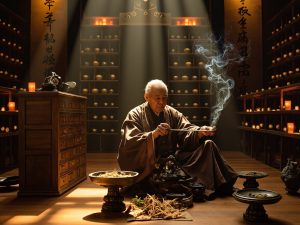Table of Contents
ToggleZhizi Bopi Tang – Nan Kaiyang
Author: Nan Kaiyang Editor: Gu Yuxi Translator: Gu Yuxi
Original Text:
Shanghan Lun261:For typhoid with body yellowness and fever, Zhizi Bopi Tang (Cape Jasmine and Phellodendron Bark Decoction) is indicated.
Jinzha Gouxuan states: “Prime Minister Fire is dragon fire; it cannot be suppressed by dampness. It should be subdued by following its nature. Only substances like Phellodendron can bring it down.” Cape Jasmine primarily targets the upper body, Phellodendron the lower, and Licorice the middle jiao. Cape Jasmine clears heart fire, Phellodendron purges prime minister fire, and Licorice acts on the middle jiao.
Syndrome Type:
This refers to jaundice with yellowing, belonging to the damp-heat jaundice syndrome, which falls under the category of yang jaundice.
Etiology and Pathogenesis:
This is a condition where heat is stagnant but not yet substantial. The stagnation of heat causes the body to yellow, and because the heat is not substantial, there is fever but no abdominal distention.
Source:
Wen Re Jing Wei · Volume 2 · Damp-Warmth
Original Text:
For typhoid with body yellowness and fever, Zhizi Bopi Tang (16) is indicated.
Interpretation:
You Zaijing said: This is a condition where heat is stagnant but not yet substantial. The stagnation of heat causes the body to yellow, and because the heat is not substantial, there is fever but no abdominal distention. Cape Jasmine removes heat from the upper body, Phellodendron Bark clears heat from the lower body, and since the middle is not yet substantial, Licorice is needed to harmonize it.
Shen Yaofeng said: Zhizi Bopi Tang clears heat and promotes urination, and it is the primary formula for treating damp-heat. Cheng Fusheng considered Ma Huang Lian Qiao Chi Xiao Dou Tang (Ephedra, Forsythia, and Adzuki Bean Decoction) as the main formula for damp-heat, not realizing that Ma Huang Lian Qiao Chi Xiao Dou Tang is a diaphoretic formula, suitable only when external wind-cold is also present. Zhizi Bopi Tang is a diuretic formula.
Wu Tang, in Wen Bing Tiao Bian (Treatise on Warm Diseases), stated: “Cape Jasmine clears the superficial layers, resolves the five types of jaundice, and also treats internal vexation. Phellodendron purges the bladder and treats heat in the skin. Licorice assists in benefiting both internal and external,” implying that yellow is treated with yellow, as they are of the same qi.
Furthermore, Ben Jing Shu Zheng states: “Zhang Zhongjing’s use of Cape Jasmine embodies these two meanings: for vexation and agitation due to heat evil, he uses it to subdue by collecting the clear and pure qi from the earth, as seen in Zhizi Chi Tang (Cape Jasmine and Fermented Soybean Decoction), Zhizi Gancao Chi Tang (Cape Jasmine, Licorice, and Fermented Soybean Decoction), Zhizi Shengjiang Chi Tang (Cape Jasmine, Ginger, and Fermented Soybean Decoction), and Zhishi Zhizi Chi Tang (Immature Bitter Orange and Cape Jasmine with Fermented Soybean Decoction). For damp-heat causing jaundice, he uses it to invigorate and open the stagnant qi, as seen in Yinchenhao Tang (Artemisia Capillaris Decoction), Zhizi Dahuang Tang (Cape Jasmine and Rhubarb Decoction), and Dahuang Xiaoshi Tang (Rhubarb and Glauber’s Salt Decoction). However, after inducing sweating, vomiting, or purging, if there is dry heaving and vexation, or a floating, rapid pulse with vexation and thirst, or chest fullness with vexation and fright, then Cape Jasmine is not suitable. Therefore, the vexation treated by Cape Jasmine must be a vexation in the chest after incorrect treatment, with fullness but no hardness, and without dysentery, for it to be a suitable formula.”
Yao Zheng states: “Cape Jasmine primarily treats heart vexation, and secondarily treats jaundice; therefore, if there is no heart vexation, its effectiveness will not be seen.”
Based on this, it can be explained that Zhizi Bopi Tang primarily clears heat and treats yang jaundice where heat is more predominant than dampness. It is suitable for heat accumulation syndromes corresponding to organs such as the liver, gallbladder, stomach, intestines, kidneys, and bladder. It is similar to Yinchenhao Tang in treating yang jaundice caused by damp-heat accumulation, but Zhizi Bopi Tang is more focused on clearing heat. Yinchenhao Tang and Ma Huang Lian Qiao Chi Xiao Dou Tang, on the other hand, are used to guide the treatment based on different disease locations and progression. They use the purging method for more substantial conditions, the clearing method for hotter conditions, and the dispersing method for more superficial conditions.
Disclaimer:
The experiences and insights shared above represent the author’s personal usage and understanding, and are provided for reference only as part of academic exchange. Please do not blindly replicate or apply them; any consequences arising from such actions are solely your responsibility. As individual constitutions vary, medication should be tailored accordingly. It is advisable to use such treatments under the guidance of a qualified physician. If you have additional experiences to share, comments and submissions are welcome.
If you appreciate my article, please give it a like.
If you are a generous and affluent individual, please consider making a donation!
Your recognition is my greatest motivation to continue writing—thank you very much!
USD Donation Button —
A RMB donation button is available below.
 微信赞赏
微信赞赏 支付宝赞赏
支付宝赞赏




